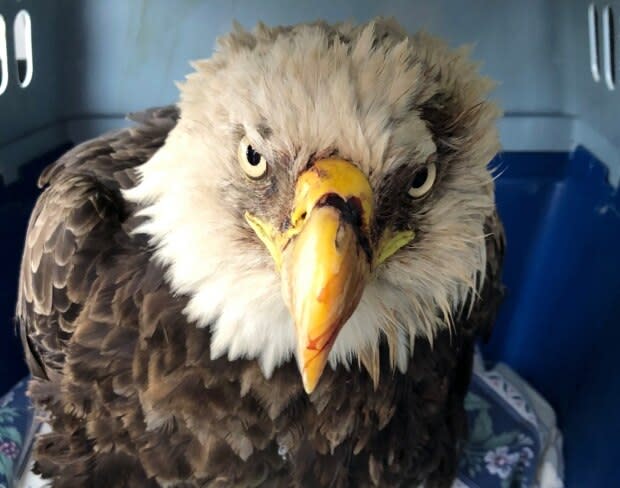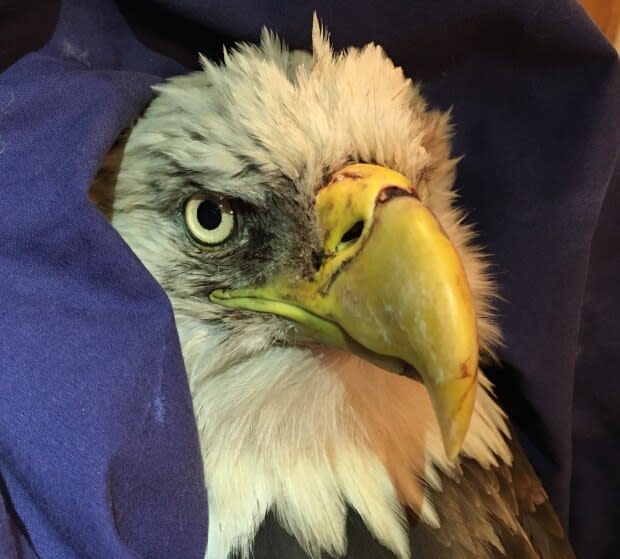A lost and lead-poisoned N.L. eagle is recovering from injury with some American help
Fingers and feathers are crossed for a Newfoundland bald eagle's recovery, after the bird ran into serious trouble far from home.
On Saturday, the female eagle was found on the ground in northwestern Pennsylvania, in dire straits. Likely having been hit by a car, the bird had multiple wounds on her wings and body, along with a cracked beak. State wildlife officers bundled her up and brought her to a nearby rehabilitation centre that specializes in birds of prey.
"Boy, she was in really rough shape. She was unable to stand, soaking wet, burrs in her tail, blood everywhere," said Carol Holmgren, executive director of the Tamarack Wildlife Centre, in Saegertown, Pa.
Despite her injuries, the bird's leg bands were intact. When Holmgren ran the bands through an online database, it turned out the eagle had been tagged in 2001 on Sound Island, Placentia Bay — more than 2,100 kilometres away, as the crow (or in this case, eagle) flies.
While staff have occasionally seen a Canadian bird before, that distance is the farthest an animal treated by the centre has travelled.
"My jaw definitely dropped when I saw the banding report say where she had come from," said Holmgren.

Staff nicknamed the eagle "Journey." At 19½ years old, she's also remarkably old to be so far afield, and one of the oldest to be treated at the centre.
"In their first year of life, a couple of months after they've learned to fly, they start doing a walkabout, they travel long distances," said Holmgren, noting that nomadic lifestyle tends to wear off by the time eagles reach maturity around the age of five or six.
Lead poisoned
Upon Journey's arrival at the centre, she was tested for lead poisoning. Eagles are susceptible to lead poisoning after feeding on carcasses that contain fragments of lead ammunition, and a third of the eagles that come through the centre's doors have lead poisoning, said Holmgren.
Journey was no exception.
"Sure enough, she had lead on board, which is a neurotoxin, and at those levels would cause her to fly drunk and slow her reaction time," Holmgren said.
"So it is likely she got injured because she had lead poisoning."

Chelation therapy — to remove the lead from her system — has been part of Journey's treatment since arriving at the centre, along with antibiotics and pain medication.
As of Tuesday, Journey had started to stand more on her own and eat solid foods.
"Both of those are really good signs that we're getting her pain under control, and that she's getting stronger," Holmgren told CBC Radio's St. John's Morning Show.
Holmgren said controlling the infection and keeping the wounds clean were the top concerns, but she was "cautiously optimistic" that Journey would be able to return to the wild.
"I'm thrilled with her progress so far," she said.
If she continues to heal, Journey will be released back into the wild in Pennsylvania.
Read more from CBC Newfoundland and Labrador


